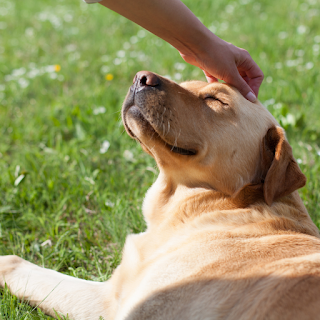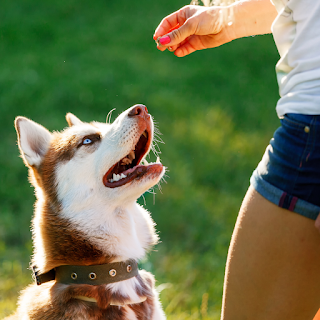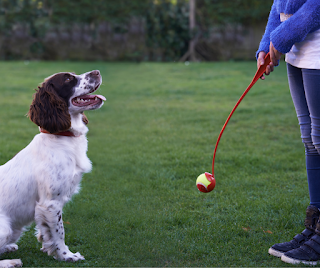4 Tips To Soothe Your Reactive Dog
4 Tips To Soothe Your Reactive Dog
If you share your life with a dog who is reactive, then you will already be well aware of the stress this can cause them on a day to day basis. Here are four top tips on how you can help make their lives easier:
Space
Increasing the physical space between your dog and the trigger that is causing them to react, is a simple, effective way to quickly diffuse a tense situation. For example, if you know that your dog reacts towards other dogs or, and you see one being walked towards you on a walk, it would be a good idea to cross the road and increase the distance between your dog and them.
By giving your dog more space away from their trigger, it will hopefully keep them under their coping threshold, making them less likely to react. Less reactions = Less stress and a happier, calmer dog.
Time
Reactivity is not something that can be fixed overnight. In fact, in the majority of cases, it can require careful lifelong management instead of a quick fix option. Forcing your dog into situations that you know are likely to cause them to react negatively, will not help to remedy their behaviour long term. In reality, it is likely to actually make things worse, as your dog will be totally overwhelmed and stressed, which is exactly what we want to avoid.
Instead, limiting their exposure to their triggers may be more beneficial. If your dog is reactive towards other dogs, it would be helpful to them to walk at quieter times of the day, in areas where there are fewer dogs if this is a possible option. This allows them more time between each dog encounter, to try and limit their stress levels.
Relaxation
Ensuring your reactive dog has plenty of opportunities to relax and unwind is crucial. Living in a world that you find scary is not only stressful for our canine companions, but it is also physically and mentally exhausting for them. It is especially important when your dog has been subjected to several stressful encounters that they have time to decompress effectively.Long lasting chews, puzzle toys and snuffle mats are useful tools to aid relaxation and reduce stress. Alongside this, a comfortable, quiet place to rest and sleep will help better prepare your dog for effectively dealing with triggers next time. Dogs that are already stressed and have not had time to decompress will be much more likely to react more quickly or more severely as they are already struggling to cope.
Treats
High value treats are a great option to try and counter-condition your dog to see their trigger as something positive, as opposed to something to be afraid of. For example, if your dog is reactive towards people, they should receive a tasty treat every time they encounter one. This should hopefully help them to see a person and look to you for their favourite treat instead of reacting negatively towards them.This process will only be effective if your dog is under their coping threshold. If the trigger is too close to your dog, it is likely they will already be overwhelmed and unable to accept a treat. In this case you should increase the space between your dog and the trigger and remove them from the situation as quickly as possible to reduce their stress.
If you would like to find out more about how to help your reactive dog, why not read Canine Contentment - The Essential Guide or Jay Gurden's book Understanding Reactive Dogs
To keep up to date with my latest blogs, you can find me on Facebook, Charlotte Garner - Canine Author







Comments
Post a Comment